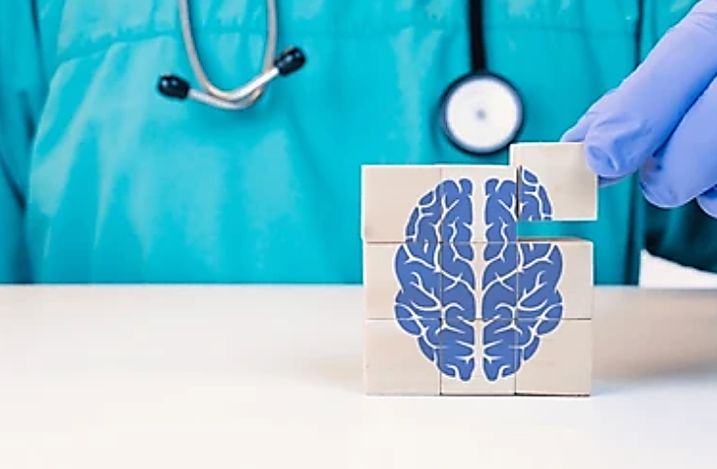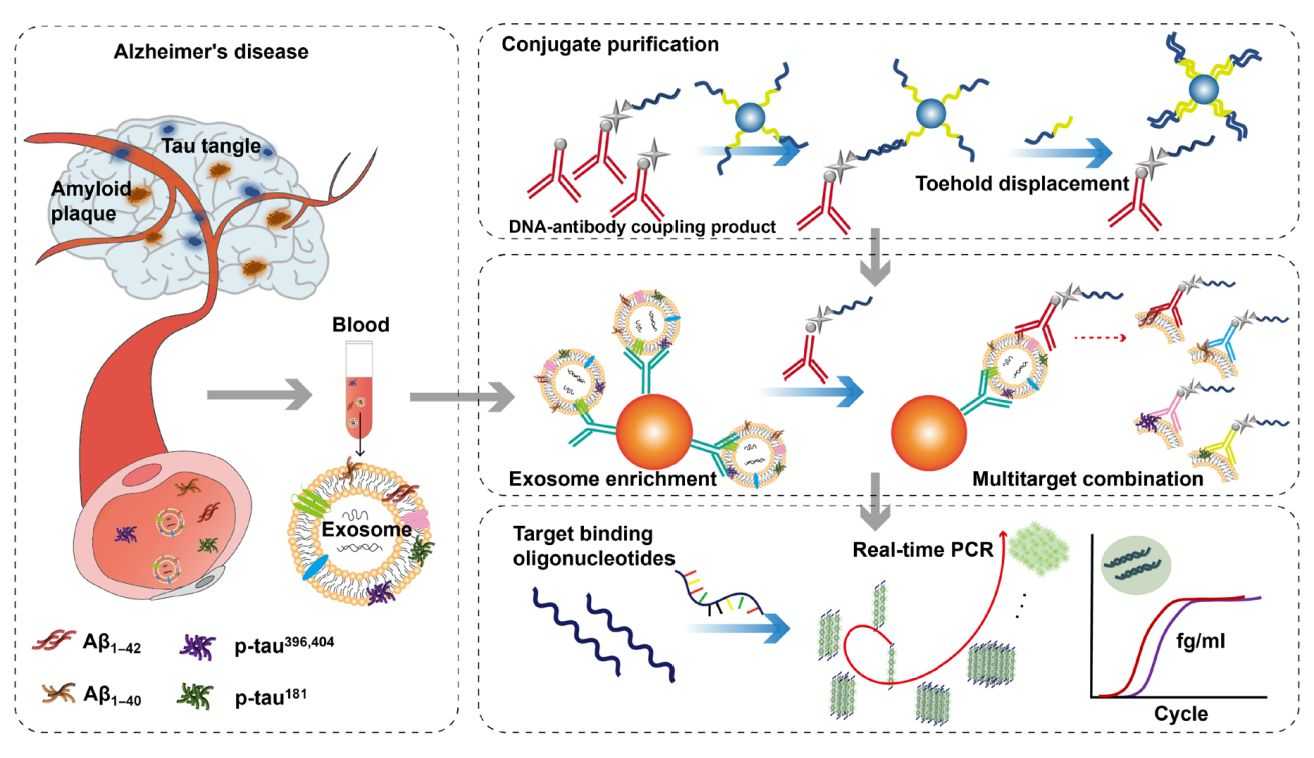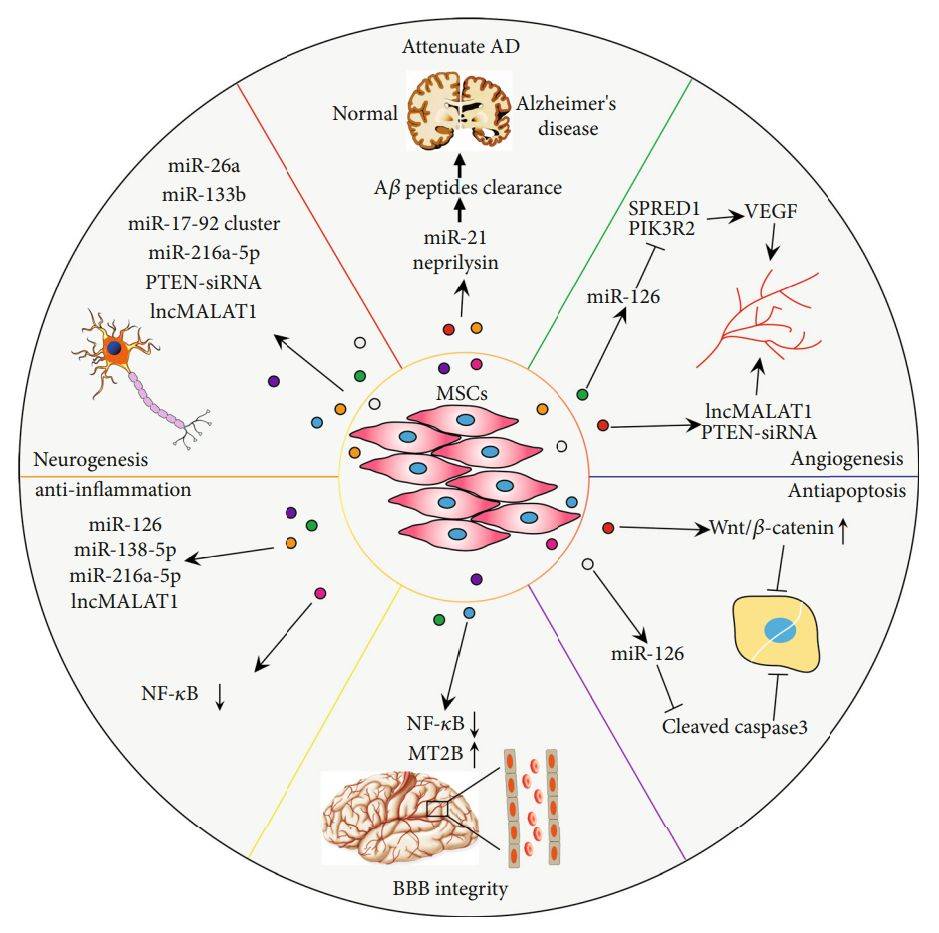Exosome Research in Human Alzheimer's
Alzheimer's disease (AD) has climbed to the seventh leading cause of death worldwide. However, AD has almost no possibility of cure. How to attack AD from a scientific point of view is the hotspot and challenge of current research.
In recent years, exosomes have come into the limelight as a novel diagnostic and therapeutic tool. Scientists predict that exosomes may become an ideal cell-free treatment because they carry multiple biologically active substances and have the function of intercellular communication.
What is AD?
AD is a degenerative disease of the central nervous system that severely impairs memory and cognitive function in patients. Sporadic AD is caused by a complex interaction of multiple factors, both genetic and environmental. In addition to age, identified factors include cardiovascular disease, depression, and the ApoE4 (apolipoprotein-E4) gene. People with AD develop a large accumulation of amyloid plaques (Aβ) in their brains compared to healthy humans. These plaques kill neuronal cells, causing severe atrophy of the cortex and hippocampus portions of the brain, which are involved in forming learning memories.

So, can removing Aβ and restoring neuronal activity be an effective treatment for AD? However, it is not as simple as one might think.
Aβ protein exists in various forms such as monomers, oligomers, and fibers. Previously researched drugs could only target a specific form of Aβ, and therefore could not achieve a complete treatment. In recent years, it has been found that exosomes can influence the disease progression of Alzheimer's disease (AD), which shows great potential in early diagnosis, treatment, and analysis of disease mechanisms.
Advantages of Exosomes in the Therapy of AD
Transmission of Important Mediators from Donor Cells - Exosomes can carry and transmit important signaling molecules originating from donor cells, such as RNA, cytokines, and proteins.
Immunomodulation - Exosomes can form an intercellular information transfer system with cells originating from different tissues and organs, and play an important role in proliferation and differentiation, immunomodulation, oxidative stress, and other pathways.
Secretion of Trophic Factors - Stem cell-derived exosomes can secrete neurotrophic factors such as NGF, brain-derived neurotrophic factor (BDNF), NT-3, etc. to promote cell survival, increase synaptic connections and improve cognitive function.
Ease of Transportation - In clinical applications, exosomes can also be quantified, stored, and transported in a way that avoids many of the limitations.
Messaging - Exosomes have been shown to cross the blood-brain barrier (BBB), enabling cell-to-cell messaging between the peripheral circulation and the central nervous system.
Exosomes are Involved in the Progression of AD
It has been shown that exosomes from the brain tissue of AD patients carry toxic Aβ and hyperphosphorylated Tau protein (p-Tau), which are delivered in neuronal cells and are involved in the aggregation and accumulation of misfolded proteins, thus contributing to AD progression. However, exosomes are also involved in the clearance of Aβ and Tau proteins and have neuroprotective functions. Studies have shown that neuronal exosomes injected into amyloid precursor protein (APP) transgenic mice brains can reduce Aβ protein deposition. The main reason is that the glycosphingolipids on the surface of neuronal exosomes can bind to Aβ and carry it to microglia cells for metabolic clearance.
 Figure 1. Pathologic role of exosomes in AD. (Soliman HM, et al., 2021)
Figure 1. Pathologic role of exosomes in AD. (Soliman HM, et al., 2021)
Exosomes Promise to Be Biomarkers for AD
AD is often detected in later life, making it difficult to treat. Reliable biochemical tests can be used for early detection of AD, potentially enhancing AD treatment throughout the age range. Since exosomes can be isolated from body fluids such as blood, saliva, cerebrospinal fluid, and urine, they are also expected to be used as biomarkers for AD diagnosis because of their specific structure and function. According to preclinical studies, AB1-42, p-Tau 396, and p-Tau 181 in blood exosomes can be used as biomarkers of AD disease progression. AB1-42 is elevated as AD patients progress from asymptomatic to diagnosed. In addition, miR-132-3p shows the highest dysregulation during the AD stage. As the disease progresses, miR-132-3p decreases and P- Tau increases in neuronal cells and may be used as a new AD biomarker.
 Figure 2. Immunomagnetic exosome diagnostic AD. (Hu S, et al., 2024)
Figure 2. Immunomagnetic exosome diagnostic AD. (Hu S, et al., 2024)
Exosomes Have the Potential to Treat AD
Exosomes, which originally exist in the human body, are characterized by high biocompatibility and low immune response and therefore can be used as therapeutic drugs or drug delivery carriers. One study showed that injecting exosomes secreted from MSCs (MSC -Exos) into a mouse model of AD disease promoted neuroregeneration in the subventricular zone of the lateral ventricles and improved cognitive dysfunction induced by AB1-42. Another study showed that electroporation of AD-treating BACE1 SiRNA into exosomes secreted by RVG-modified dendritic cells inhibited BACE1 gene and protein expression and reduced Aβ levels in the mouse brain.
 Figure 3. MSC-derived exosomes can be used to treat neurological disorders. (Jin Q, et al., 2021)
Figure 3. MSC-derived exosomes can be used to treat neurological disorders. (Jin Q, et al., 2021)
Products we offer:
| Cat No. | Product Name | Source |
| Exo-HDBF-01 | HQExo™ Exosome-SDH-Alzheimer's plasma | Exosome derived from Single Donor Human Alzheimer's plasma |
| Explore All Exosomes Isolated from Human Alzheimer's Plasma | ||
Summary
Exosomes, as mediators of intercellular communication, can influence disease progression in AD. On the one hand, exosomes promote neuroinflammation and neuronal apoptosis by participating in the propagation of pathogenic proteins. On the other hand, exosomes can ameliorate the pathologic damage of AD by removing toxic proteins, promoting nerve repair, and inhibiting neuroinflammation.
In addition, exosomes have shown great potential in the early diagnosis, treatment, and analysis of disease mechanisms of AD. In the future, research will focus on the use of exosomes as biomarkers, vaccines, and drug carriers. The combination of exosome engineering to establish a new drug delivery system can open up new avenues for AD risk prediction and the discovery of potential new therapeutic targets for AD.
Creative Biostructure is committed to providing clients with comprehensive exosome solutions to explore the mechanism of action and application prospects of exosomes in AD. If you have any questions, please feel free to contact us.
References
- Soliman HM, et al. Exosomes in Alzheimer's Disease: From Being Pathological Players to Potential Diagnostics and Therapeutics. International Journal of Molecular Sciences. 2021. 22(19): 10794.
- Hu S, et al. Sensitive detection of multiple blood biomarkers via immunomagnetic exosomal PCR for the diagnosis of Alzheimer's disease. Sci Adv. 2024. 10(13): eabm3088.
- Jin Q, et al. Extracellular Vesicles: Novel Roles in Neurological Disorders. Stem Cells Int. 2021. 2021: 6640836.
